
views
X
Research source
Inducing a Fever With Medical Assistance

Speak to your doctor. If you decide that you want to try to induce a fever the first thing you should do is speak to a medical professional. Make an appointment to see your doctor and ask her about how to induce a fever. Your doctor will advise on the potential benefits and dangers of artificially inducing a fever and what your options are. Sometimes drugs induce a fever when they are taken, but this generally is considered an adverse response akin to an allergic reaction. Immunizations, such as diphtheria and tetanus, may induce a fever. The drugs work by increasing metabolism or evoking an immune response. Drug-induced fevers can cause other symptoms as well. Doctors who do use this option might use Bacillus Calmette-Guerin (BCG), a tuberculosis vaccine. If your doctor advises you not to try to induce a fever you should listen to her. Do not attempt to induce a fever against your doctor's advice.
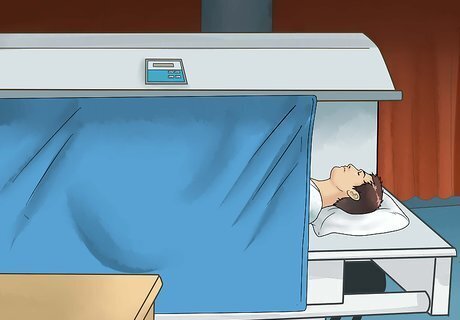
Use a medical sauna or hyperthermia unit. Look for a medical centre or centre of alternative medicine that actively uses fever therapy. These sources will usually be equipped with an infrared sauna unit, also known as a hyperthermia unit. Follow the instructions provided at the centre when using this unit to induce a fever. Usually, you will be instructed to warm yourself internally before using the unit. You might be asked to drink ginger root tea or to take ginger root and cayenne pepper capsules. Before entering the unit, you will undress and cover the skin in an herbal formula, often containing ginger. Wrap yourself in towels then enter the unit. A standard session lasts for 60 minutes, but if you are not demonstrating any negative reaction, your session may last for two to three hours. You will need to drink water during the process, especially if undergoing a longer session. If you do not sweat within the first 10 minutes or otherwise experience a negative reaction, the session will end early. After a successful session, you'll undergo a warm to cool shower to close your pores.

Cut down on fever-reducing drugs. As the debates about the potential benefits of fevers continues, some doctors are advising that people limit their use of fever-reducing drugs, such as aspirin. By using these drugs with discretion you will enable a moderate fever to run its course which can prompt your body's own immunological defences to activate. The endogenous pyrogen hormone will travel to the brain and prompt a rise in your body's temperature. Rapid muscle contractions may also be triggered, which will produce heat. Nerves may constrict outlying blood vessels, resulting in a reduction of heat lost to the environment. Body tissues may be broken down to produce heat. The sensation of coldness can prompt you on put on extra layers of clothes or drink hot fluids which will help to raise your temperature.
Increasing Body Temperature at Home
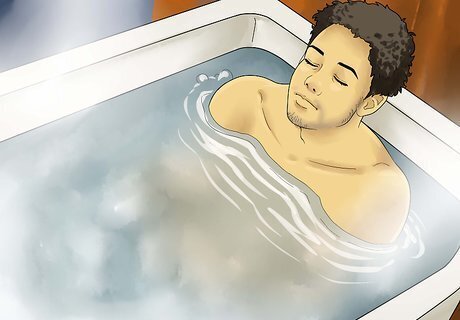
Prepare a Schlenz bath at home. Also known as an "overheating bath," this centuries-old technique works by stimulating the body's natural immunological response. You can take a bath at a professional Schlenz centre, but the process is simple enough to do at home. Before the bath, drink one or two cups of hot herbal tea, such as ginger, lemon balm, peppermint, elder, or goldenrod tea. If you have a weak heart, add several drops of Crataegisan to the tea to reduce the potential risk brought about by the hot bath. Fill the bathtub with hot water. Keep the temperature between 97 and 98°F (36 and 37°C). Submerge your entire body. If you cannot fit your entire body into the tub, bend your knees so that you head is submerged. Make sure that your nose and mouth remain out of the water so that you can breathe without any problems. You should not allow the water temperature to drop during the process. Add more hot water, as needed, to maintain the heat. Allow the water to reach a temperature of 100.4°F (38°C) with each addition. Remain in the bath for about half an hour. Have another person help you out of the water if you feel faint or dizzy getting out.
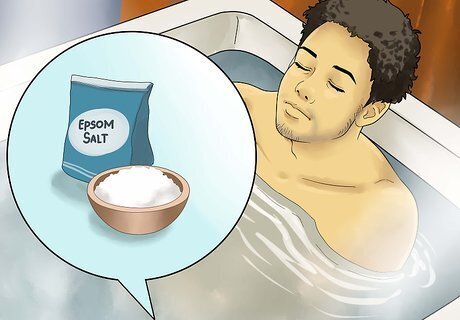
Try an alternate form of bath therapy. Aside from the traditional Schlenz bath, there are other hot bath therapies you can use to induce a fever. One technique, which has been claimed to have cancer-fighting qualities, requires you to draw a hot bath, making the water as hot as you can comfortably stand. Do not scorch yourself. Mix in 2-1/4 lbs (1000 g) Epsom salts. Soak as much of your body as possible in the bath. Stay in there for a full 20 to 25 minutes, adding more hot water as needed to maintain a constant source of heat. Sip on ginger root tea during the bath to heat the body from the inside as you heat your body from the outside using the bath water. Be careful when getting out of the bath. If you feel faint or dizzy, ask for someone else's assistance. Dry off naturally instead of drying yourself with a towel. Spread a sheet of plastic over your bed to protect it from getting wet and lie down, covering yourself with as many blankets as possible. Stay there for three to eight hours. You will sweat a lot and should stay in bed until the fever breaks. Usually, the fever will go away after six to eight hours. You can repeat this once a week for as many as six to eight weeks.
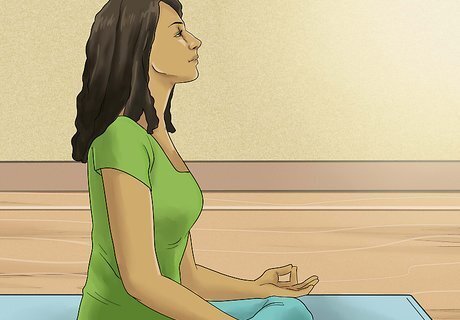
Try g-tummo meditation. A specific kind of meditation associated with Tibetan monks has been cited as a way to increase body temperature and potentially induce a fever. Scientific analysis has shown that g-tummo meditation can help raise body temperature to the temperature zone of a slight or moderate fever. The rise in body temperature has been observed during the Forceful Breath vase breathing element of the meditation, and the length of time the temperature can be sustained appears to depend on the neurocognitive element (meditative visualisation) of the meditation. Find an expert instructor and ask him or her to guide you through the practice. The Forceful Breath vase breathing technique can be practised at home to help to regulate your body temperature. Vase breathing is essentially breathing in clean air and then exhaling around 85% of that air. This breathing helps create a vase shape in your lower abdomen. It can be coupled with visualisation, such as picturing flames travelling up your spine.
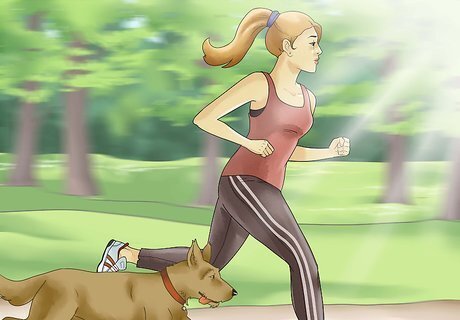
Exercise to increase body temperature. Exercise and strenuous physical activity increase your core body temperature. Doing a tough workout on a hot day, or wearing layers of clothing will make it harder for your body to cool down and lose heat. Your core temperature could rise by a few degrees. You should take care when exercising or you could induce a number of heat-related illnesses, including heat cramps and heat exhaustion. Some athletes, wrestlers for instance, wear extra layers of clothes even plastic bags and do cardiovascular activities like running and lifting. These athletes also go into the sauna with this apparel on in order to elevate their body temperatures and lose water weight while flushing out their systems. Be sure to drink plenty of fluids to avoid becoming dehydrated. Be aware of symptoms of heat-illnesses such as dizziness, nausea, heart rhythm problems, and visual problems. If you experience any of these symptoms stop immediately, cool down and recover.
Eating Foods that Increase Body Temperature

Serve yourself some brown rice. A side of brown rice with every meal, or at least with every dinner, can cause your body temperature to rise within a matter of days. As a complex carbohydrate, brown rice gives your digestive system a challenge. The extra work your system uses in the digestive process heats you up inside. Note that other whole grains, like quinoa and buckwheat, can also have a similar effect.
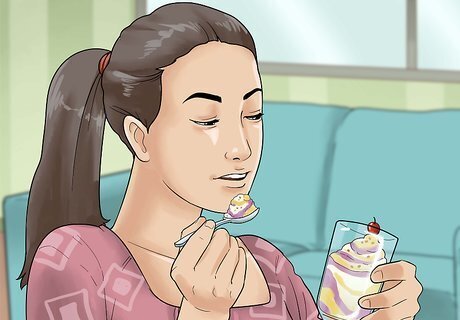
Eat ice cream. Eating one serving of ice cream each day can gradually cause your core temperature to increase over a span of several weeks. The shock of cold your system receives forces it to heat up to prevent your temperature from dropping. Additionally, foods that contain fat, protein, and carbohydrates heat up the body more as your digestive system processes them. Fat moves especially slow through your digestive system, forcing your body to warm up as it works more.
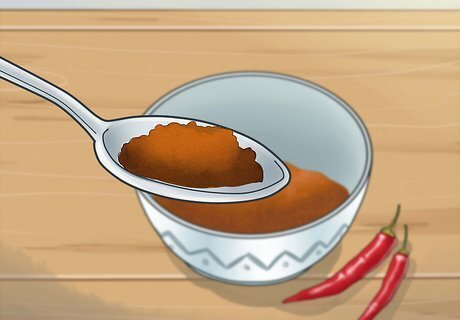
Use cayenne pepper. Add as little as 1/4 tsp (1.25 ml) of cayenne pepper to your food each day. If the heat is too much to handle in one sitting, spread it out by only adding a dash of cayenne pepper to your food at each meal. Cayenne pepper contains an especially hot compound known as capsaicin. This compound is responsible for the initial burst of heat you experience when eating cayenne pepper, but this burst of heat is not responsible for the change in body temperature. The digestive process your body undergoes when processing capsaicin is what causes the spike in your temperature. While it is not certain, jalapeno and habanero peppers may have a similar effect.
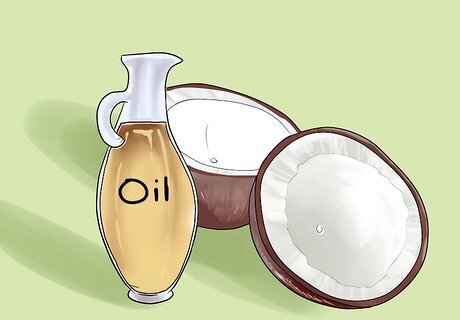
Consume more coconut oil. Coconut oil is a medium chain triglyceride (MCT) that aids in elevating core body temperature and metabolism. MCTs are known to increase metabolism and enhance weight loss. Instead of being stored as fat it is converted to energy, thereby increasing body temperature. This may be beneficial to people that have low thyroid function. Further, coconut oil may have antiviral properties and may help people with diabetes stabilize their blood glucose.
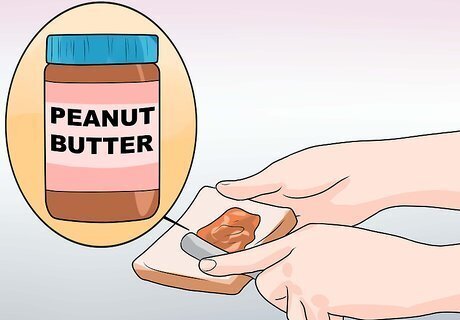
Eat more peanuts. Peanut are a good source of protein and fatty acids. Peanuts also have a lot of niacin. Niacin is a B vitamin that is responsible for respiration and metabolism at the cellular level. When consumed, niacin causes a flushing that leads to an elevation in temperature. Peanuts also have antioxidant properties and can rev up a sluggish circulatory system.
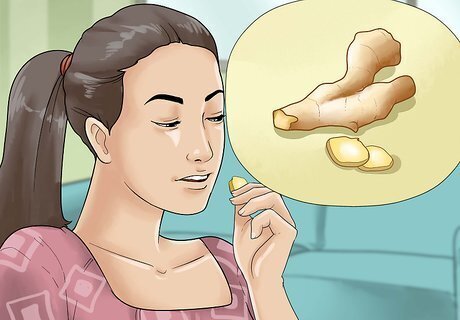
Get more ginger into your diet. Eating a thumb-sized piece of raw ginger can give your body temperature a quick spike. If eating it does not appeal to you, though, you could also make a tea by boiling the same sized piece in water for five to 10 minutes. Ginger increases digestive activity, thereby increasing body temperature. Other root vegetables may help somewhat, as well. If ginger does not appeal to you, try carrots, beets, or sweet potatoes.




















Comments
0 comment